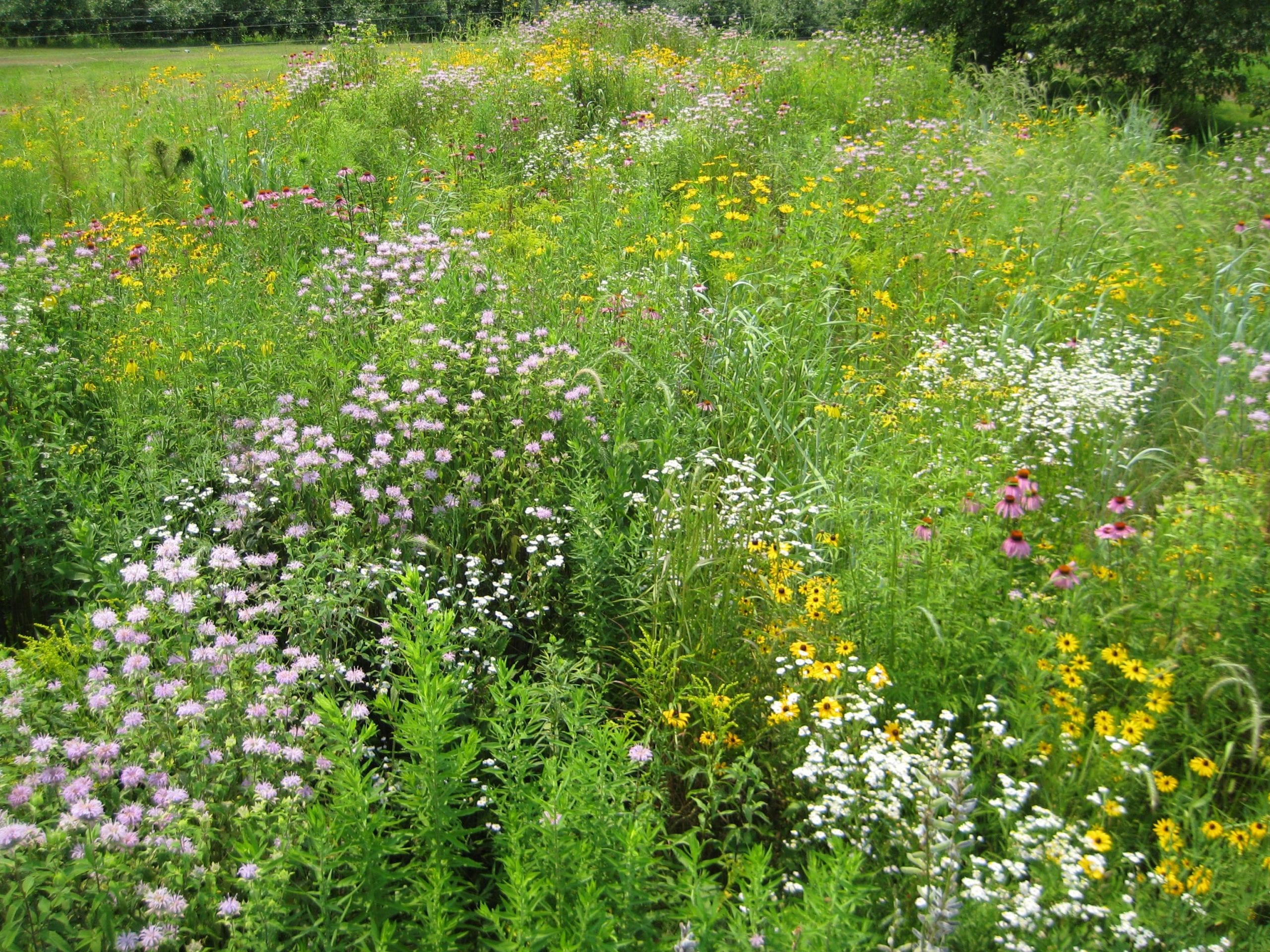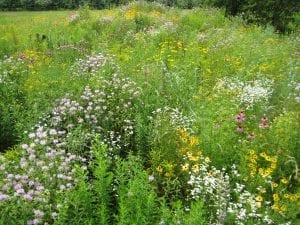

View of an established wildflower meadow
RMI is abuzz with activity! This year we’ve started our very own Bee Project to help bees, and other native pollinators, whose numbers are suffering due in part to loss of habitat. Our goal is to establish and grow wildflower meadows as bee foraging habitat beginning with a meadow at our office in Holderness, NH.
RMI based the siting of our bee meadow on research from the University of New Hampshire Cooperative Extension, the Northern New England Pollinator Working Group and the Xerces Society. Many bees native to New England nest on the edge of fields in the ground, dead trees or hollow stems of plants. The distance these bees can travel to feed is largely determined by their body size – the smallest bees can fly about 50 feet, others can fly miles to find flowers. To create a bee meadow you need an open area with one or more forested edges protected from pesticides/pesticide drift. Our native bees can use all the habitat they can get so the bigger the bee meadow the better. However, budget, space and management constraints must be taken into consideration. Bees respond faster to smaller dense plantings of wildflowers than large sparse plantings. The bee meadows must also be mowed annually to allow the wildflowers to thrive. Because of this RMI is placing our bee meadow close to the treeline on our property in a long continuous strip that will allow the bees to travel the furthest distance.
Before seeding a wildflower meadow, you must first smother any existing vegetation. Two common smothering methods are solarization and/or the application of herbicides. Solarization uses greenhouse plastic film placed on the ground to “bake” the soil. However greenhouse plastic can cost upwards of fifty cents a square foot and the solarization method requires an entire summer season to take effect. For those wishing to establish a larger bee meadow, the cost and labor associated with the solarization method can be prohibitive. Similarly, many people interested in establishing a wildflower meadow do not wish to use herbicides on their property. RMI is using a new smothering technique in the creation of our meadow applying our NutraSoil manufactured topsoil to smother our lawn. Using NutraSoil is a cost-effective and less labor-intensive option that avoids the need for herbicide!
RMI is collaborating with municipalities, conservation districts, and other local partners in NH, VT and MA to establish their own bee meadows. Want to participate in RMI’s Bee Project? Give us a buzz!